Daffodil Blindness: Specialist Growers Share Common Reasons Narcissus Doesn’t Flower


Elizabeth is a Permaculture Garden Designer, Sustainability Consultant and Professional Writer, working as an advocate for positive change. She graduated from the University of St. Andrews with an MA in English and Philosophy and obtained a Diploma in Applied Permaculture Design from the Permaculture Association.
Reviewed By COLIN SKELLY

Colin is a Horticulturist and Horticultural Consultant with experience in a range of practical and managerial roles across heritage, commercial and public horticulture. He holds the Royal Horticultural Society’s Master of Horticulture award and has a particular interest in horticultural ecology and naturalistic planting for habitat and climate resilience.
Contributions From JANET HICKMAN

Janet is an accredited judge and judge instructor for national and local shows; she has also received the 2022 American Daffodil Society Silver Medal in recognition of her service.

Anne is the owner of Dryad Nursery, a Daffodil and Snowdrop specialist and nursery based in North Yorkshire here in the UK.
IN THIS GUIDE
DAFFODIL GUIDES
Blindness
Container Growing
Varieties
Daffodil blindness can be a disappointing problem and you might not know how to fix the problem.
In this article, we’ll take a look at this issue and what you might be able to do about it.
What Is Daffodil Blindness?

Daffodil blindness is the name given to the phenomenon when daffodils come up with foliage but do not flower.
The leaves can be healthy and numerous, yet flowers do not form.
“Daffodils that grow but fail to bloom because of daffodil blindness might not bloom because of several causes,” says Janet Hickman from the American Daffodil Society.
“Some, especially those with late-season double flowers, may ‘blast’, meaning the bud appears but dries up and fails to open, usually due to the weather becoming too hot too soon.”
It can be caused by environmental conditions, gardener error, or several different pests or diseases.
In general terms, daffodil blindness is a sign that the development of the bulbs has been affected in some way.
Why Do Daffodils Come Up Blind?
Environmental Conditions

After they have flowered and the flowers have faded, daffodils should continue to grow for a further period of a few weeks, to replenish their energy stocks through photosynthesis.
This energy is stored in the bulb for next year.
In certain environmental conditions, such as when there is a drought or the weather is very dry, daffodils may die prematurely, before these energy reserves have been stored.
“A prolonged period of dry weather after flowering was the most common reason for daffodil blindness this year as it followed the early drought last year (2022),” shares Master Horticulturist Colin Skelly.
“Usually mowing too early is the culprit.”
“A planting site that was once ideal may gradually become overshadowed by the growth of trees and shrubs causing a decline of daffodil flowering,” explains Janet.
Anne Wright from Dryad Nursery recommends moving your plants to a sunny location if they are growing in the shade or cutting back any overhanging branches from nearby trees and shrubs that may be blocking the light from getting to your plant.

Blindness can also occur due to a lack of nutrition in the growing medium or soil.
Daffodils that have just been planted the previous year will usually flower well in their first year, but in poor and low-nutrient soil, performance can diminish rapidly and blindness can occur.
If you have had successful daffodil blooms over a number of years, in a bed or border, or in pots, the blindness may have occurred due to overcrowding.1Daffodils won’t bloom if too crowded. (2016, January 7). Livingston Daily Press. Retrieved March 14, 2023, from https://eu.livingstondaily.com/story/life/home-garden/2016/01/07/daffodils-bloom-crowded/78135090/
Overcrowding can lead to blindness or poor flowering.
Gardener Error
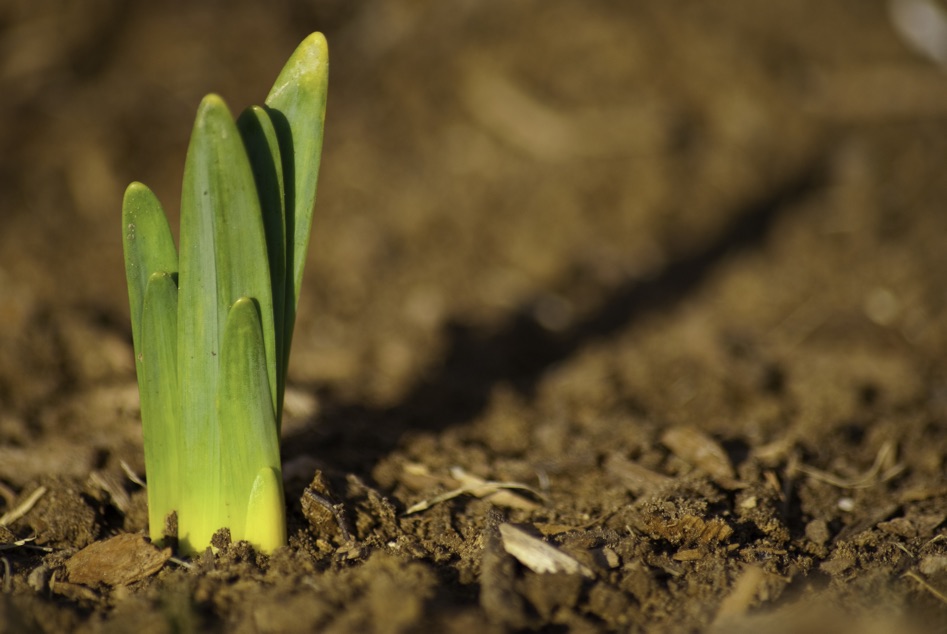
A number of errors by gardeners can also be to blame for daffodil blindness.
One issue may be that bulbs were planted too late as bulbs planted after September will not tend to do as well.
The bulbs may also have been planted too shallowly in the soil.
Planting daffodils too shallowly can encourage the formation of lots of small bulbs – too small to flower successfully.
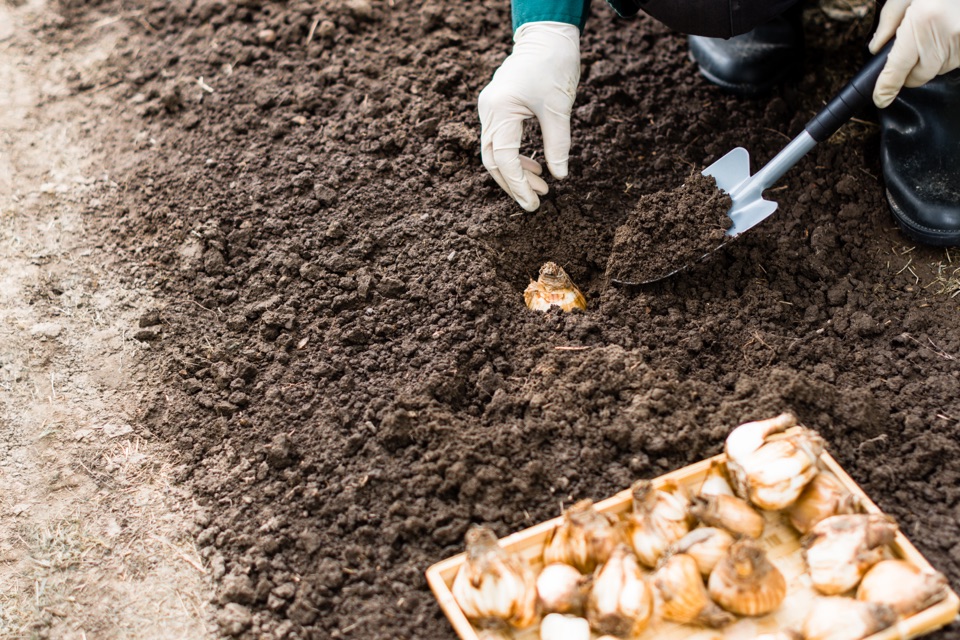
Another big mistake that gardeners can make which can lead to blindness is removing or mowing over daffodil foliage too soon after flowering.
As mentioned above, daffodils require a period of active growth after flowers fade in order to gather up energy reserves for the following year.
Gardeners may also, in the pursuit of a neat and tidy garden, knot up the foliage after flowers fade, tying them together in a bunch.
This can also cause problems as the leaves will not be as able to gather the energy they need for successful flowering the following year and blindness can occur.
Pests & Diseases
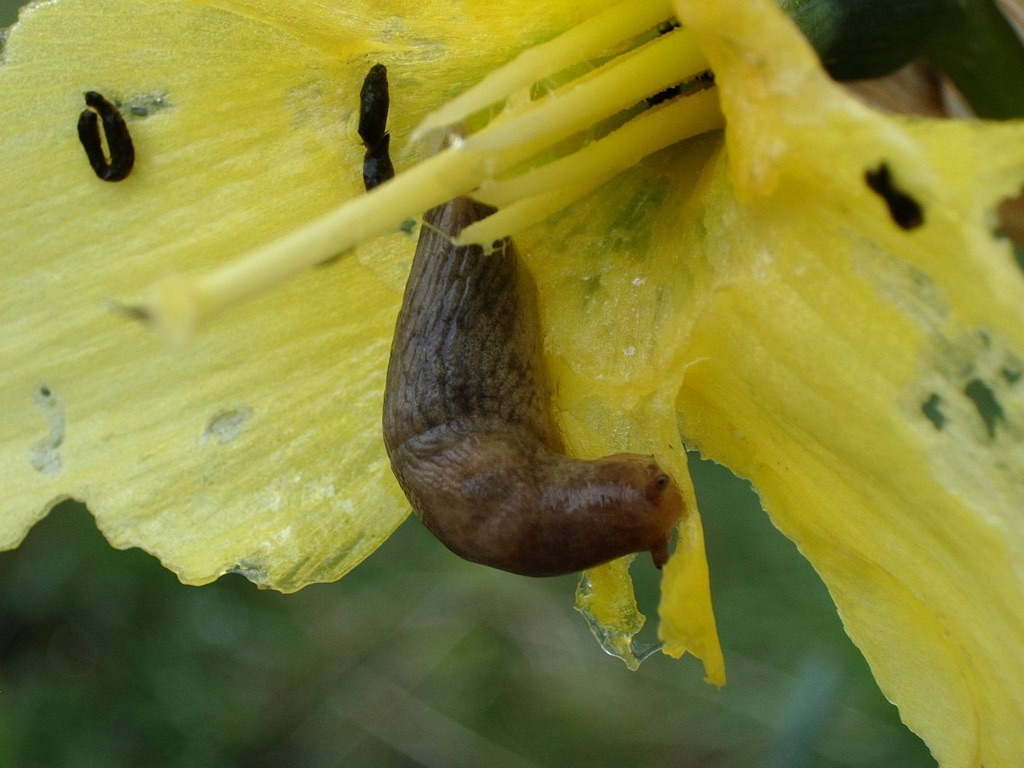
Pests such as narcissus eelworm and narcissus bulb fly can damage bulbs below the soil, which can lead to poor flowering or blindness.
“Bulb flies can attack the growing bulb, depositing eggs that hatch into destructive larvae,” says Janet.
If daffodils do not flower, this can also be due to diseases like daffodil viruses and narcissus basal rot.2Narcissus basal rot. (n.d.). Royal Horticultural Society. Retrieved March 14, 2023, from https://www.rhs.org.uk/disease/narcissus-basal-rot
These things can sometimes cause bulbs to die altogether, but can also simply lead to a decline in flowering.
Usually, if a pest or disease is to blame, the issues can be hard to detect, but foliage may appear stunted or yellow prematurely.
Reducing Chances Of Daffodil Blindness
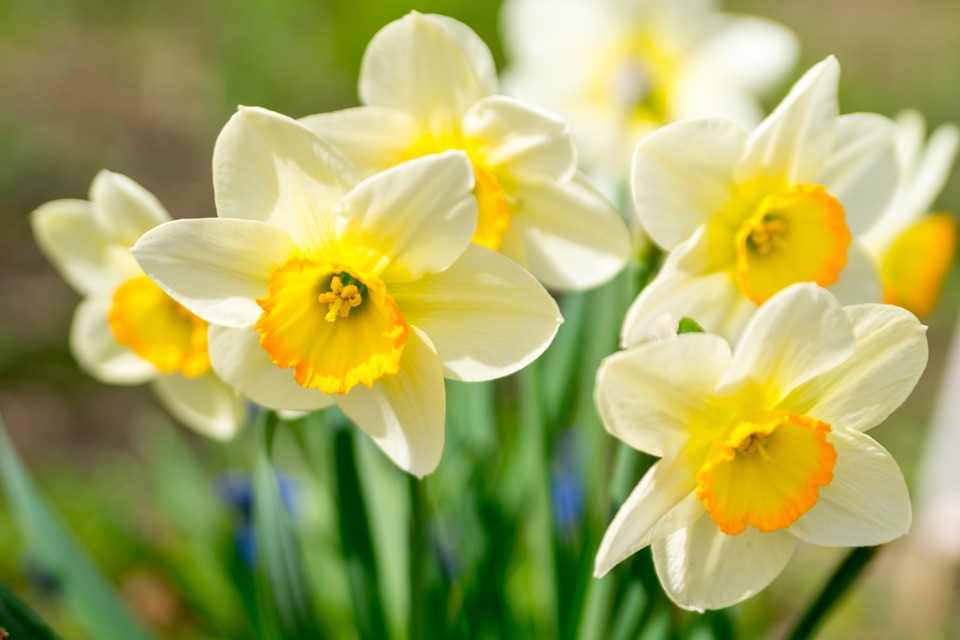
Many of the causes of daffodil blindness can be removed through careful preparation and plant care.
Environmental conditions and causes related to gardener error can often be remedied relatively easily by the gardener.
1) Improve Environmental Conditions
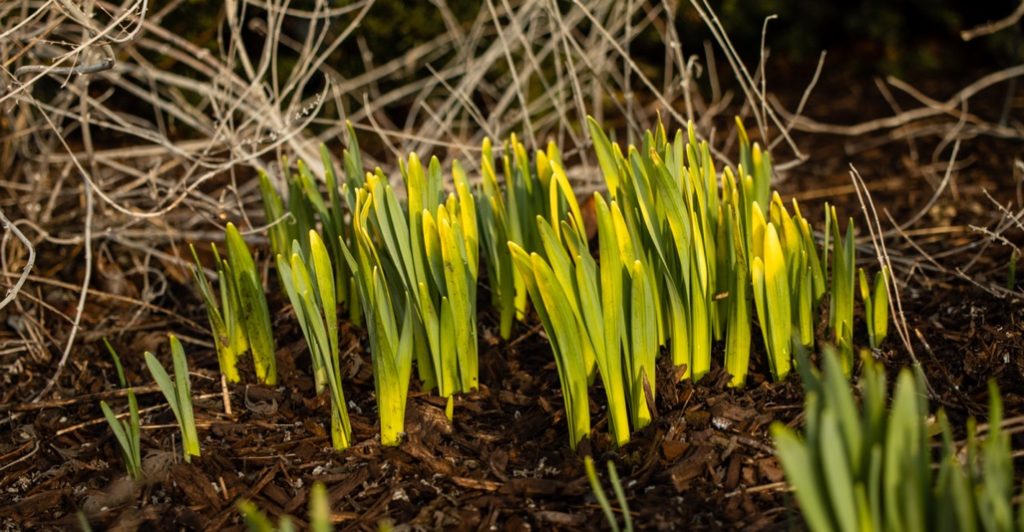
Preparing the site well before planting can help reduce the chances of blindness.
The American Daffodil Society recommend growing your daffodils in a position that receives at least 6 hours of sunlight a day in soil that is very well-draining.
Make sure that any issues with compaction and poor drainage, or excessively free-draining soils have been addressed.
Add plenty of organic matter.
Make sure you have chosen a suitable spot for your daffodils which will not become too dry.
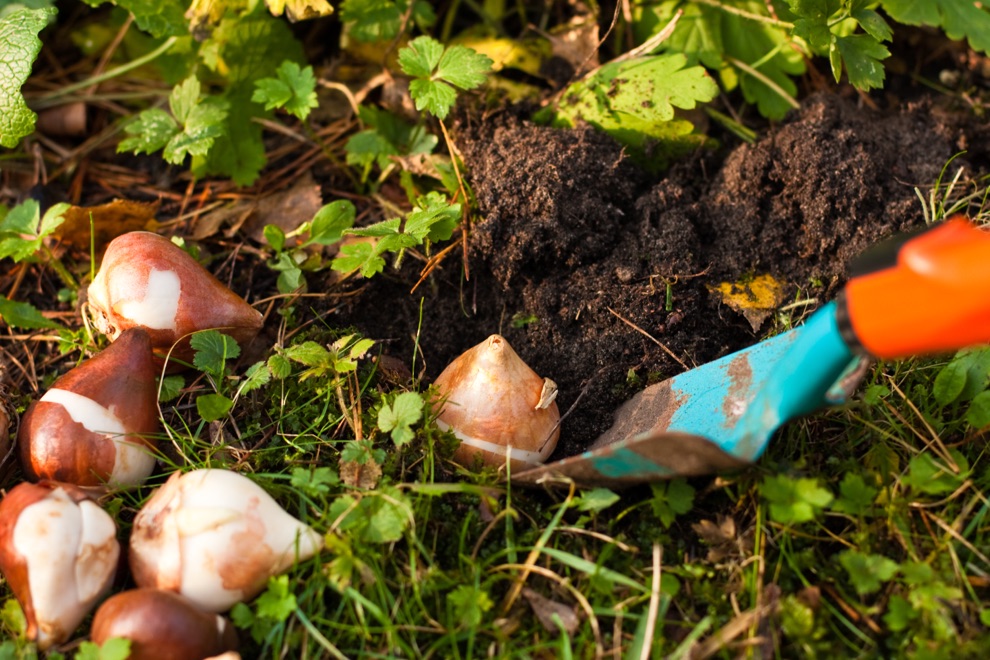
When dry conditions prevail after flowering, water thoroughly and well until the plants show signs of dying down naturally.
Mulching around your bulbs with organic matter will help reduce moisture loss and will also help by adding slow-release nutrients to the soil.
Where flowering declines rapidly and nutritional issues are suspected, consider feeding daffodils with a general-purpose organic fertiliser in the spring.
Anne Wright suggests feeding your plants with a high-potash fertiliser at the first sign of something being not quite right.
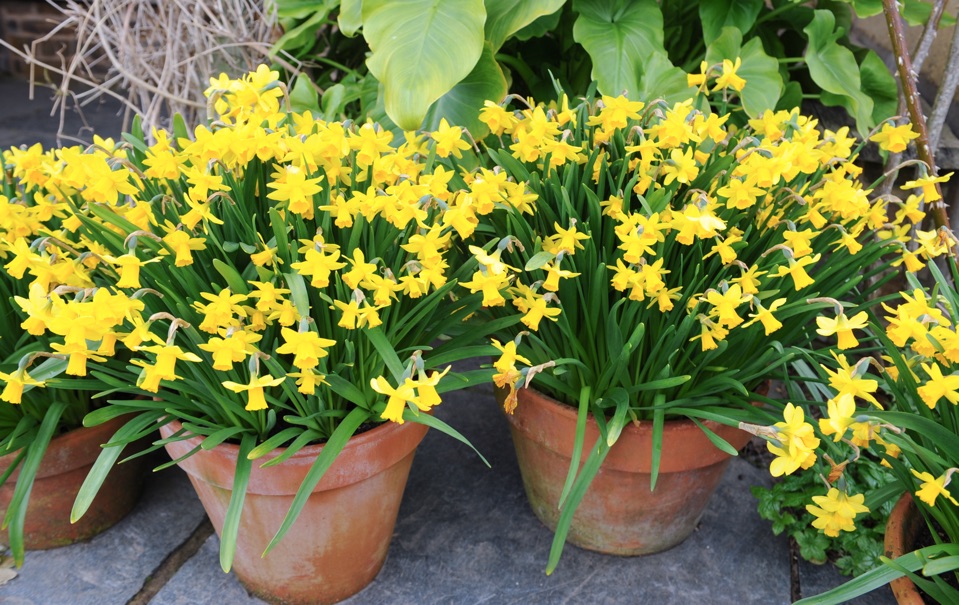
After flowering, especially when daffodils are grown in containers, it can also be helpful to feed every couple of weeks with a high-potassium organic liquid plant feed, from when the blooms have faded until the plants begin to die back naturally.
If your daffodils are blind due to overcrowding, lift the bulbs when the foliage dies back.
Replant bulbs in a bed or border so that there is a gap of at least 5-7.5cm between each one, making sure that you add plenty of organic matter such as homemade compost or well-rotted manure before replanting.
2) Plant Quality Bulbs At The Correct Depth

First of all, make sure that you start out with good quality daffodil bulbs so that you can expect to achieve the best results when you get things right.
If you want to naturalise daffodils in a lawn area, then make sure you select bulbs which are well suited to this situation.
Ideally, plant these bulbs before the end of September, and wherever they are to grow, plant the bulbs at 2-3 times their own depth.
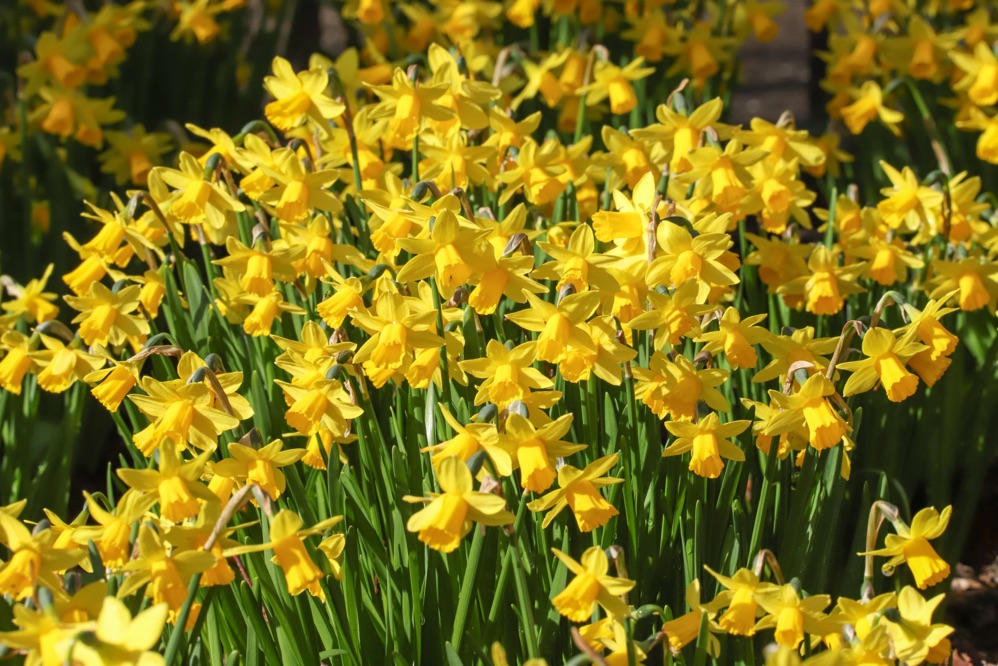
Make sure that you leave daffodil foliage in place for a period of at least 6 weeks to allow them to build up energy reserves for next year.
“Don’t cut back or tie the leaves after flowering, and watch for slug damage on flowers,” Anne warns.
Allow them to remain and photosynthesise naturally.
3) Address Any Pests Or Diseases
Unfortunately, there is no treatment for narcissus bulb fly or typical daffodil diseases.
If you suspect that pests or disease are the issue, any affected bulbs should be removed and destroyed.
If you have unearthed daffodil bulbs to find larvae of the narcissus bulb fly, get rid of infested bulbs and consider covering any remaining plantings with insect-proof netting between mid-May and early July, which may discourage the females from laying their eggs.
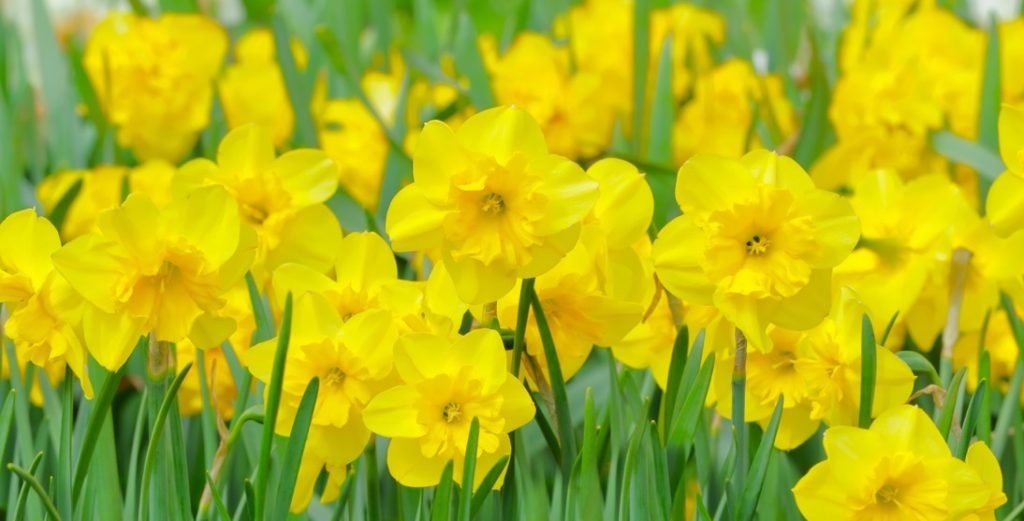
Remove any bulbs suspected to be diseased as soon as possible.
If basal rot has occurred, but you wish to continue to grow narcissus in a given location, consider opting for N. tazetta cultivars, which are resistant.3Narcissus tazetta “Geranium.” (n.d.). Royal Horticultural Society. Retrieved March 14, 2023, from https://www.rhs.org.uk/plants/224368/narcissus-tazetta-geranium/details
If you bear all the above in mind, you should often be able to avoid this issue and be able to solve the problem of blind daffodils or poor daffodil flowering in your garden where it has occurred.
References
- 1Daffodils won’t bloom if too crowded. (2016, January 7). Livingston Daily Press. Retrieved March 14, 2023, from https://eu.livingstondaily.com/story/life/home-garden/2016/01/07/daffodils-bloom-crowded/78135090/
- 2Narcissus basal rot. (n.d.). Royal Horticultural Society. Retrieved March 14, 2023, from https://www.rhs.org.uk/disease/narcissus-basal-rot
- 3Narcissus tazetta “Geranium.” (n.d.). Royal Horticultural Society. Retrieved March 14, 2023, from https://www.rhs.org.uk/plants/224368/narcissus-tazetta-geranium/details
